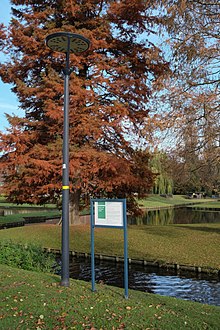Commercial crossover

Some street artists have earned international attention for their work and have made a full transition from street art into the mainstream art world — some while continuing to produce art on the streets. Keith Haring was among the earliest wave of street artists in the 1980s to do so. Traditional graffiti and street art motifs have also increasingly been incorporated into mainstream advertising, with many instances of artists contracted to work as graphic designers for corporations. Graffiti artist Haze has provided font and graphic designs for music acts such as the Beastie Boys and Public Enemy. Shepard Fairey's street posters of then-presidential candidate Barack Obama were reworked by a special commission for use in the presidential campaign. A version of the artwork also appeared on the cover of Time magazine. It is also not uncommon for street artists to start their own merchandising lines.citation needed
Street art has received artistic recognition with the high-profile status of Banksy and other artists. This has led street art to become one of the 'sights to see' in many European cities. Some artists now provide tours of local street art and can share their knowledge, explaining the ideas behind many works, the reasons for tagging, and the messages portrayed in a lot of graffiti work. Berlin, London, Paris, Hamburg and other cities all have popular street art tours running all year round. In London alone there are supposedly ten different graffiti tours available for tourists. Many of these organizations, such as Alternative London, ParisStreetArt, AlternativeBerlin, pride themselves on working with local artists, so visitors can get an authentic experience and not just a rehearsed script.
Many of these guides are painters, fine-art graduates and other creative professionals that have found the medium of street art as a way to exhibit their work. With this commercial angle, they can let people into the world of street art and give them more of an understanding of where it comes from. It has been argued that this growing popularity of street art has made it a factor in gentrification.
Legality and ethicsedit
Street art can have legal problems. The parties involved can include the artist, the city or municipal government, the intended recipient, and the owner of the structure or the medium where the work was displayed. One example is a case in 2014 in Bristol, United Kingdom, which illustrates the legal, moral, and ethical questions that can occur. The Mobile Lovers by Banksy was painted on plywood on a public doorway, then cut out by a citizen who in turn was going to sell the piece to garner funds for a boys' club. The city government in turn confiscated the artwork and placed it in a museum. Banksy, hearing of the conundrum, then bequeathed it to the original citizen, thinking his intentions were genuine. In this case, as in others, the controversy of ownership and public property, as well as the issues of trespassing and vandalism, are issues to be resolved legally.
Copyrightedit
Under US law, works of street art should be able to find copyright protection as long as they are legally installed and can fulfil two additional conditions; originality in the work, and that it is fixed in a tangible medium. This copyright would then survive for the lifespan of the artist plus 70 years. In case there is a collaboration between two artists, both would hold joint ownership in the copyright. Street artists also hold moral rights in their work, independent of economic rights arising from copyright. These include the right to integrity and the right to attribution. Recently, street art has started to gain recognition among art critics, and some major companies have found themselves in trouble for using this art without permission for advertising. In such a case, H&M, a fast-fashion retailer used street art by Jason "Revok" Williams in an advertisement series. In response to Williams’ ‘Cease and Desist’ notice, however, H&M filed a lawsuit, alleging that since the work is a "product of criminal conduct", it cannot be protected by copyright. This view has been taken earlier too, in the cases of Villa v. Pearson Education and Moschino and Jeremy Tierney. In all three cases, before the judge could make a ruling on the issue of the illegality of the art, settlements were reached. These companies typically settle out of court to avoid costly, time-consuming litigation.
When it comes to the question of the destruction of street art, the US has applied the Visual Artists Right Act (VARA) to introduce moral rights into copyright law. In English v. BFC & R East 11th Street LLC and Pollara v. Seymour, it was held that this Act was inapplicable to works of art placed illicitly. A distinction was also made between the removable and nonremovable works, indicating that if a work can be removed trivially, it cannot be destroyed, irrespective of its legal status. Another important factor considered by the court in the latter case was whether the artwork was "of a recognized stature".
In a case where a group of artists was awarded $6.7 million, the judge held that the art was not made without permission of the owner of the building, and that an important factor was that the demolition was done ahead of the intended date, indicating willful thought.
Comments
Post a Comment